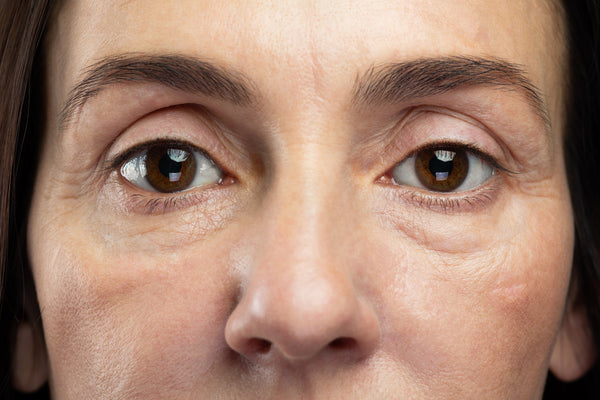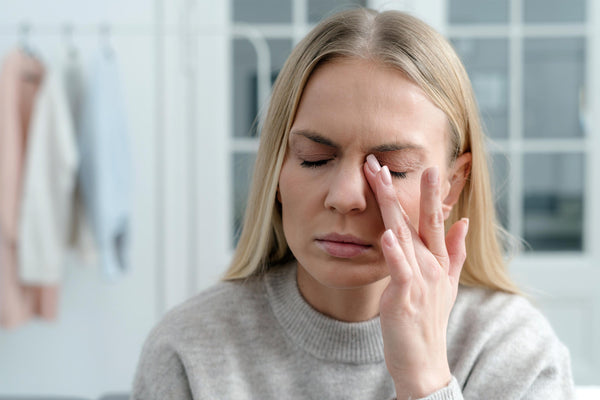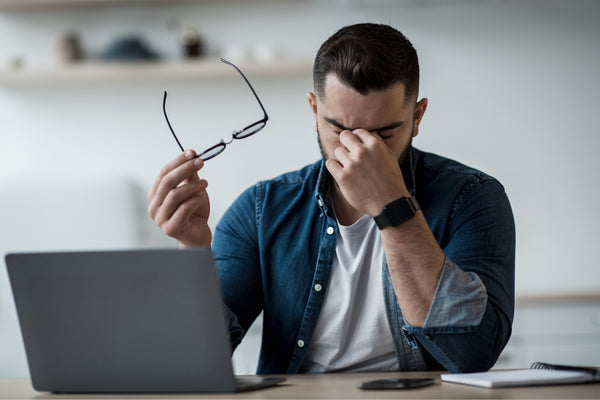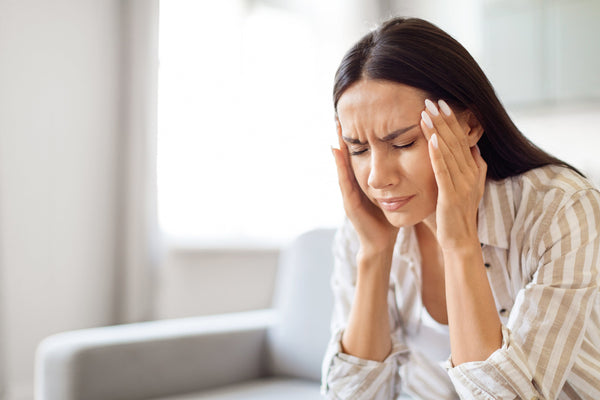
What is eye strain (asthenopia)?
Eye strain, also known as asthenopia, is a very common condition. It is caused by intense use of your eyes and can be caused by reading without a break, using digital devices for long periods of time or driving long distances.
It can be uncomfortable, but eye strain isn’t usually a serious condition and there are many things you can do to reduce or prevent eye strain. Sometimes it can be caused by dry eyes, muscle fatigue, or focusing issues. However, if your eye strain isn’t relieved by the use of eye drops or by making some behavioural changes, it could be a symptom of something more serious than eye fatigue. So always make sure you get your eyes checked by an optometrist to prevent it leading to permanent eye damage.
What are the symptoms of eye strain?
The symptoms of eye strain are varied and the combination of symptoms will differ from person to person.
The different symptoms of eye strain include:
- Sore, tired, burning or itchy eyes
- Red, watery eyes
- Twitching eyelids
- Dry eyes
- Difficulty focusing
- Headaches
- Light sensitivity
- Eye discomfort
- Blurred vision
Causes
Eye strain is usually caused when your eyes are intensely focused on a task for a prolonged period of time. Tasks such as intense work on a screen or reading for long periods of time are very common causes.

Common causes of eye strain include:
- Stress
- Fatigue
- Computer and digital screen use
- Driving for long periods of time
- Reading without resting your eyes
- Exposure to bright light
- Straining to see in dim lighting
Presbyopia and eye strain
It’s common for adults around the ages of 40-55 to experience eye strain as a result of presbyopia. Presbyopia is a common condition when ageing where the lens in your eye loses flexibility.
If you’re between the ages of 40 and 55, are having trouble seeing things up close, need to hold reading materials farther away to focus on them, and have headaches, alongside eye strain, it’s a good idea to book an eye test.
Prevention and treatment
When it comes to eye strain, prevention is key. Make sure you book regular eye tests to keep track of your overall eye health. And use the following methods to help stave off eye strain.
Rest your eyes

20:20:20 Rule
The 20:20:20 rule is an easy method to follow that really helps to reduce the risk of eye strain, especially if you work with screens.
Take a break every 20 minutes, focusing on something 20 feet away for 20 seconds.
Reduce glare
Light glare from light-coloured painted walls or shiny surfaces, as well as reflections on your computer screen, can cause eye strain.
- Installing an anti-glare screen to your monitor can help.
- Cover windows or use a computer hood over the monitor to reduce any external light.
- If you wear glasses, use lenses with an anti-reflective coating to reduce glare. Most opticians offer this for a small additional cost.
- Make sure you have good lighting. Most issues of monitor glare occur when the background illumination is significantly different from the screen.
Upgrade your display
If you have an old CRT computer monitor, upgrading to a newer LCD model can reduce eye strain as they are easier on the eyes and have a matt finish to reduce glare.
Modify your workstation
Make sure you have an ergonomic workstation to reduce the risk of eye (and body) strain.
- Introduce a document holder at eye level so you don’t have to keep looking up and down from a screen to look at paper or physical documents.
- Ensure your desk and chair are at the right height. Improper posture while working on your computer can also add strain.
- Your computer screen should be an arms length away from your eyes with the top of the screen in line with your eyes.
Wear lenses specifically for computers
If you need glasses, make sure your prescription is up to date and is designed for working with screens. Your optician should ask if you use computers and offer glasses appropriate for this use.
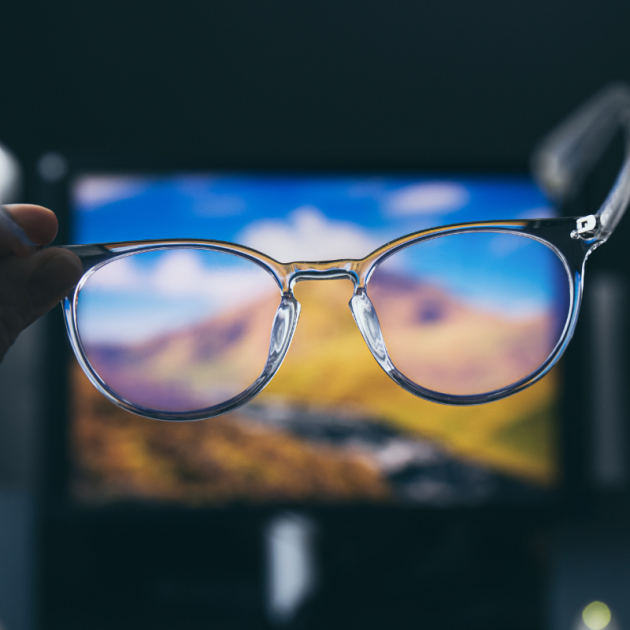
If you wear contact lenses, consider wearing glasses when on your computer as contact lenses can become dry and uncomfortable during sustained computer work.
Screen work reduces the rate at which we blink. So try to make a conscious effort to blink more often or consider the use of an ocular lubricant.
Learn more about avoiding computer eye strain with our helpful guide.
Takeaway
Eye strain is a very common issue. Especially if you tend to work with computers, drive long distances, or do a lot of intense reading without a break. Thankfully, eye strain is easily avoided with some simple measures. Making sure your workstation is set up correctly, reducing glare, and practising the 20:20:20 method are all ways you can avoid straining your eyes.
If you suspect you have eye strain, book an appointment with your local Leightons branch for an eye test.




